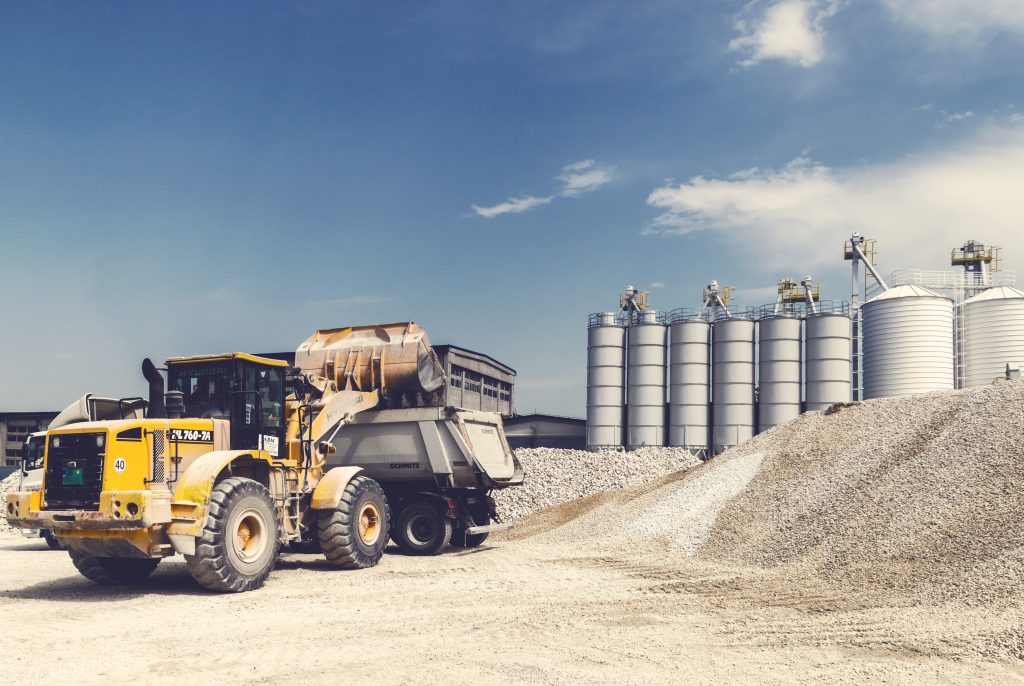Are you unsure where to start with your Work Health and Safety (WHS) provisions?
In today’s post, we’re going to be looking at examples of Work Health and Safety Management systems and unpacking some of their key components.
We’ll show you how simple and easy WHS management systems make it for businesses just like yours to comply with their Work Health and Safety obligations.
In this post, we’ll be discussing the following areas:
- What is a WHS Management System?
- What types of WHS Management systems are there?
- Paper-based WHS Management Systems
- Key Components of Paper-based WHS Management Systems
- Hybrid WHS Management Systems
- Key Components of Hybrid WHS Management Systems
- Software-based WHS Management System
- Key Components of Software-based WHS Management Systems
Let’s get right to it!
What is a WHS Management System?
WHS management doesn’t need to be complicated.
Yet that’s exactly how thousands of Australian businesses feel about their WHS provisions.
Look.
At its core, a WHS management system is any system that helps a business create a safer workplace environment.
There are five main goals of any WHS management system.
It must help a business:
- Comply with Australian legislative requirements and standards,
- Create a safe workplace
- Improve worker safety and happiness
- Increase productivity
- Improve the business’ bottom line
As we’ll see in the next section, there are several different types of WHS management systems, but what they have in common is that they all aim to accomplish these five main goals.
To do this, all WHS management systems cover the following eight areas:
Policies and procedures
WHS management systems help businesses to streamline the process of authoring and distributing key documents, such as safe work procedures (SWPs) and other policies.
Audits and inspection
WHS management systems help businesses to record the outcomes of physical inspections on-site via and determine the correct actions.
Safety training Management
A key feature of WHS management systems is that they help organizations to manage worker information including tracking KPI’s, training records and assessments. This helps to ensure that workers stay up-to-date with their training.
Risk management
WHS management systems help a business to identify all workplace hazards and risks. This helps the organisation create a risk profile and prioritize the necessary corrective actions that must be taken.
Incident management
WHS management systems also help businesses record and manage all types of incidents, such as near misses, injuries, property damage, and environmental incidents.
Asset management
WHS management systems help a business to register their key assets such as machinery, vehicles and plant equipment. This helps managers complete important tasks such as schedule inspections and follow up with maintenance.
Chemical management
For companies that store or manage chemicals, WHS management systems help ensure that all chemical-related regulations are complied with.
Contractor management
WHS management systems help companies to supply contractors will all relevant documents and licenses.
As we’ll see, there are different types of WHS management systems and they all help in different ways.
What types of WHS Management systems are there?
Broadly speaking, there are three main types of WHS management systems, as follows:
- Paper Based
- Software-Based
- A combination of paper-based and software-based (i.e. Hybrid)
All Australian businesses, regardless of type, size or organizational structure, will use a WHS management system that fits into one of these three categories.
In the following sections, we’ll look at examples and types of WHS management systems within each of these three categories. We’ll also look at the 10 key elements of WHS management systems to show what they look like and how they work.
Paper-based WHS Management Systems
The first type of WHS management system is the traditional paper-based approach.
This offers the following key benefits:
- Low cost
- Simple
- Customizable
For these reasons, paper-based WHS management systems are favoured by many small Australian businesses. However, as this type of system relies on paper reports, there needs to be three lines of defence to ensure that all critical WHS data is captured and processed; the WHS manager, the managers, and the workers.
However, paper-based WHS management systems have the following disadvantages:
- Space
Story WHS paperwork in filing cabinets takes up valuable office space. - Data sharing and access
The WHS manager must ensure that only relevant data is shared with other staff members.
So what are the key components of a paper-based WHS management system?
Key Components of paper-based WHS management systems
In this section, we’ll look at the key components of paper-based WHS management systems.
Policies and procedures
Paper-based WHS management systems will have written safe work procedures (SWPs) and other policies created by the WHS manager or other key stakeholders in the organization. These documents will be stored in a filing cabinet.
Audits and inspection
With a paper-based WHS management system, all audits and inspections will be stored as hard copies. Responsibility for recording the outcomes of inspections and assigned the appropriate action will fall to the WHS manager or staff.
Safety training Management
Paper-based WHS management system will rely on written records of worker training and assessments to help inform key decisions about which members of staff require further training.
Risk management
Paper-based WHS management systems use hard copies of risk assessments to record and identify all workplace hazards and risks. The company’s WHS manager will create a risk profile and prioritize the necessary corrective actions that must be taken.
Incident, asset, and chemical management
In terms of incident, asset and chemical management, Paper-based WHS management systems relying on hard copies of documents to record all types of incidents, vehicle and equipment registration, and scheduled maintenance. All chemical management will be stored as hard copies.
Hybrid WHS management Systems
The second type of WHS management system is a hybrid between a traditional paper-based WHS management system and WHS management system software.
This offers the following key benefits over the paper-based approach:
- Reduced storage space for documents
- Better informed staff
- Easier access to documents
- Greater potential for information sharing and oversight
For these reasons, hybrid WHS management systems are favoured by many small-to-medium sized Australian businesses.
Hybrid WHS approaches are a low-cost way of ensuring that WHS-related documents and information are shared within an organization. As documents are often stored as both hard copies and as paper-based documents, there is less risk of document loss and great potential for sharing within an organization.
However, hybrid WHS management systems have the following disadvantages compared with full software approaches:
- Limited data sharing and access (compared with WHS software solutions)
- Limited oversight
- No automation
So what are the key components of a hybrid WHS management system?
Key Components of paper-based WHS management systems
In this section we’ll look at the key components of hybrid WHS management systems.
Policies and procedures
Hybrid WHS management systems feature written safe work procedures (SWPs) and other policies created by the WHS manager or other key stakeholders in the organization. These documents will often be stored as hard AND soft copies, improving data sharing across the business.
Audits and inspection
Hybrid WHS management system still use hard copies of audits and inspections but may also use software-based approaches such as cloud-based scheduling software. This lets a larger workforce keep abreast of the outcomes of inspections and any actions assigned to them.
Safety training Management
Hybrid WHS management system will use a software-based approach such as spreadsheets to help inform key decisions about which members of staff require further training.
Risk management
Hybrid WHS management systems use both hard and soft copies of risk assessments to record and identify all workplace hazards and risks. This gives more members of staff access to this information and makes it easier for the company’s WHS manager will create a risk profile and prioritize the necessary corrective actions that must be taken.
Incident, asset, and chemical management
Hybrid WHS management will use both hard and soft copies of forms to record all types of incidents, vehicle and equipment registration and scheduled maintenance. Some systems may use electronic forms to record and store these types of incidents.
Software-based WHS management systems
The third type of WHS management system is an entirely software-based.
Although WHS software is commonly used by medium to large Australian businesses, it is versatile enough to be used by any business, regardless of type, size or organizational structure.
Software WHS management systems differ significantly from both paper-based and hybrid approaches to WHS.
They offer a number of advantages:
- Automated processes
- Regulatory oversight and compliance
- Improved data access
Let’s look at some examples of a software-based WHS management system and explore its key components.
The most popular and common type of WHS management system is the modular, cloud-based approach.
This type of software-based WHS management system helps organisations to simply and effectively comply with their Work Health and Safety obligations.
How?
By using integrated modules, the software can automatically generate WHS plans and safety plans, helping the business stay productive and profitable while avoiding regulatory non-compliance issues.
This software works by using a proprietary databased of safety records to generate safety documents for the staff to use.
The software is designed to help the business automatically address all current legislative requirements and standards, including Work Health and Safety Act 2011, and the Work Health and Safety Regulation 2011.
Key Components of software-based WHS management systems
Software-based WHS management systems typically feature the following key components.
Simplified incident management
Unlike paper-based and hybrid WHS management systems, fully software-based WHS management systems give your staff a wide range of easy-to-use tools that they can use to record and manage all incidents, including injuries, near misses, environmental incidents and property damage. For example, you can put up signs on your premises that your workers simply scan with an app on their smartphone when they need to report a hazard or log an incident. Once completed, the app saves it to the cloud and the management system is updated in real-time.
Active risk management
Unlike paper-based and hybrid WHS management systems, fully software-based WHS management systems can autonomously identify a variety of workplace hazards (based on data submitted by members of staff such as incident report forms and hazard reports) and then use this data to create a risk profile for your business. The software then uses this profile and prioritises the necessary corrective actions for your business, helping to actively manage risks.
Easy asset management
One of the main advantages of full software-based WHS management systems is that you can use them to register all of your key assets, including your vehicles, plant equipment and machinery. This helps you dramatically simplify things like your pre-start inspections and helps your staff members report on conditions and maintenance requirements with ease.
Customized reporting
One area where full software-based WHS management systems really come into their own is with customized reporting. You can use the software to access granular safety statistics in real-time and generate highly customisable dashboard reports. This lets you and your staff members monitor key metrics through hundreds of pre-set dynamic reports.
Easy chemical management
If your business is responsible for storing and handling chemicals, software-based WHS management systems are unbeatable. The software is built to automatically check an extensive database of chemical safety information and automate all compliance requirements relating to the storage, use and handling of chemicals. This takes the pressure off your staff and helps ensure that your business is in full regulatory compliance at all times.
Improved HR Safety Management
Software-based WHS management systems are great for handling crucial worker information, including training records, assessed competencies and track completion of required KPI’s. This helps you track who has been trained for what, when their training is due to expire and when they need a refresher course. This helps you keep your staff fully trained at all times.
Conclusion
If you were curious about the examples and key components of WHS management systems, that’s about it!
As you’ve seen, WHS software is special software that is dedicated to streamlining and automating your workplace safety obligations.
With the right WHS management system software in place, you can be sure that things like errors in manual reporting, breakdowns in communications and outdated compliance documentation don’t leave your business exposed to liabilities and penalties!
Take the complexity out of WHS management with WHS management system software today! Sign up now for a free trial or call us for a free consultation from one of our safety professionals!
Related posts
- Work Health and Safety Management System Software: 10 Key Elements
- How to Measure and Evaluate WHS Management Systems





